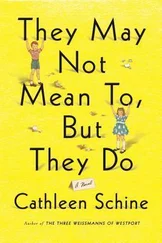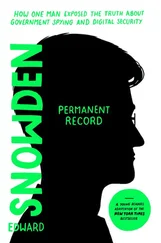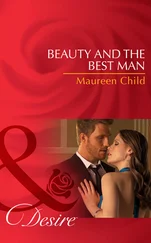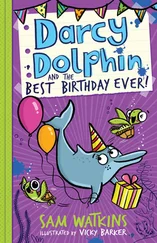Long-established custom dictates that numbers above 100, sports scores, dates, temperatures, ratios, betting odds, prices, street addresses, phone numbers, and generally stuff referring to numbers as numbers be presented in numerals rather than words.
The Yankees beat the Red Sox yesterday by a score of 5–2. The two teams have met 223 times; the Yankees lead, 130–93.
Otherwise, you won’t go wrong if you follow a simple principle: when in doubt, spell it out.
2. CAPITALIZATION
A similar strategy goes for capital letters. They’re called on, most frequently, to indicate proper nouns, which are, generally speaking, the official names of people, places, trade names, and organizations. For example: General Electric, the University of Southern California, the Atlantic Ocean, the Rolling Stones, Mars, Albany, John Glenn, Excedrin, and France . (But not my Wife, the Ocean, an Antibiotic , or the Supermarket .)
Titles and honorifics that come before a name are also capitalized; Mr ., Mrs., Miss, Ms. , and Dr. are abbreviated as well. But if you are merely giving a description of the person or naming his or her job — even before the name — use lowercase.
The panelists will be lawyer Mike Jones, anchorwoman Claudia Axelrod, and President Barack Obama.
After a name, even titles are lowercased:
Barack Obama is the president, Benedict is the pope, and Harvey Weill is the district attorney.
Seasons, directions, and relatives (for some reason, the three most commonly wrongly capitalized categories) are rendered in lowercase as well:
[ Every Summer, my Mother and Father and I got in the car and drove West. ]
Every summer, my mother and father and I got in the car and drove west.
3. ITALICS
A surprising number of people don’t realize that, in a text, italics or underlining indicate exactly the same thing. In typewriter days, it wasn’t possible to indicate italics, so we underlined for emphasis. Now that everybody writes on computers, underlining isn’t necessary, so don’t do it. Use italics, but only for emphasis, for titles of books and other compositions (as long as you’re consistent), to indicate words as words (as is done throughout this book), and for words in languages other than English. Putting a word in all capital letters is not an acceptable way to indicate any of these things, except in dialogue, where all-caps can suggest shouting at a very high volume, or, occasionally, in informal writing, where it can be amusing.
The foreign-language item demands some amplification. If a foreign word is familiar enough that readers will understand what it means — think joie de vivre, siesta, zeitgeist, espresso — don’t italicize it. However, sometimes you may have reason to use a more obscure foreign word or a short quotation from something said or written in a foreign language. Italicize the word or quote — and make sure you quickly translate it.
One complication with italics is e-mail. Some e-mail programs allow italicization, but others play dumb when you hit the appropriate keys, or instead give you a Spanish tilde sign or some other odd piece of punctuation. Some people compensate for this by using special cues for emphasis, like *this* or _this_ That’s okay for e-mail, but stay away for it in any other setting.
4. THERE IS NO REASON EVER TO USE BOLDFACE IN A PIECE OF WRITING, EXCEPT FOR A SECTION HEADING (LIKE THIS)
Students commonly use bold instead of the proper typographical way to indicate emphasis or a title, which is italics. Aside from being counter to standard usage, it’s jarring; each boldfaced word makes the reader jump.
[ Why do they insist on putting Hamlet in bold? ]
Why do they insist on putting Hamlet in bold?
B. Punctuation
1. ’
a. Plurality’sPluralities
Punctuation isn’t sexy, but it’s actually a key to not-bad writing. That’s because of the concept I discussed at the end of the last chapter, “mindful writing.” You can dismiss apostrophes — and punctuation in general — as just a series of technical details. I prefer to look at them as measures of mindfulness. When you write carelessly or automatically — mind less ly, that is — the chances of apostrophizing correctly are pretty slim. They steadily improve as you begin to pay attention.
An easy thing to remember is not to use apostrophes — ever — to indicate a plural, no matter how tempting it seems. Doing so will get you pilloried in a book like Eats, Shoots & Leaves.
[ They have three TV’s on the first floor and four on the second, so if you don’t like what’s on, you can just walk into another room! ]
Should be TVs , just as it should be IOUs, SUVs , and C.D.s. (The first two examples don’t have periods between the capital letters; the third does. That’s a matter of house style and will vary by publication. The rule about no apostrophe before the s is the same in either case.)
The same goes for decades and centuries, which are in fact plurals (an accumulation of ten years for a decade, 100 for a century). Some publications countenance the 1800’s or the 60’s , but it’s wrong. The 1960s, the ’60s , and the sixties are all okay, as long as you’re consistent.
A small number of students instinctively and wrongly reach for the apostrophe to indicate the plural of a y -ending word: several country’s instead of several countries. The move is a bit more understandable with proper nouns, but equally incorrect. That is, the correct forms are:
Six Kennedys attended the ceremony.
and
Over his career he’s won seventeen Grammys .
Other writers mess up by pluralizing y -ending words when the intention is merely to indicate a possessive:
[ When the mom took away the babies’ pacifier, he started crying. ]
When the mom took away the baby’s pacifier, he started crying.
And that brings us to the next topic.
b. Possessed
The basic form of possessive apostrophes is blank’s thingamajig , where both words are nouns and thingamajig belongs to or is associated with blank. Another way to look at it is that an apostrophe is called for if you can change the wording to the thingamajig of blank. This is incredibly common in speaking, writing, and singing, as exemplified in the songs “Mickey’s Monkey,” “Judy’s Turn to Cry,” and “John Brown’s Body.”
The basic form is easy enough. It can get a little trickier when you’re indicating a possessive of a noun ending with the letter s. Here’s a two-step way to deal with it. (1) An apostrophe always follows the s. (2) If the word is a singular, or a proper name, you put another s after the apostrophe. If not, you do not.
Phyllis’s dress’s zipper is broken.
However (and this is step 3), if the word is a plural, most style guides have you leave out the second s, on the theory, I guess, that it’s not pronounced.
The first half of the twins’ birthday party is being held at the Smiths’ house and the second part at the Joneses’.
That example brings two further guidelines to mind. First, the plural of Jones is indeed Joneses. Most s- ending common and proper nouns follow an add — es form; the most common exception is series, the plural of which is series. Second, if you want to put a sign outside your house — a questionable idea to begin with — inscribe the plural of your name followed by an apostrophe, that is, The Yagodas ’; “house” or “place” is understood. An apostrophe-less The Yagodas just makes it seem like a verb is missing. And The Yagoda’s makes no sense, except in reference to the domicile of a person who refers to himself as “The Yagoda.”
Читать дальше












